What Is A Landscape?
All the visible features of an area of land, often considered in terms of their aesthetic appeal, a format of printed matter or screen display that is wider than it is high. It consists of the geographic features that mark, or are characteristic of, a particular area. The term comes from the Dutch word landschap, the name given to paintings of the countryside.
Fay Godwin
Fay Godwin (17 February 1931 – 27 May 2005) was a British photographer known for her black-and-white landscapes of the British countryside and coast.

Composition in Landscape Photography
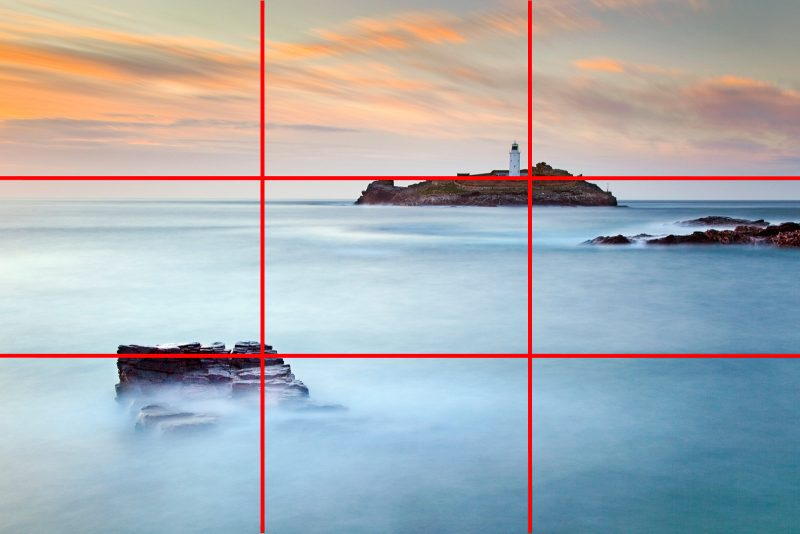
The Rule of Thirds is very simple. Just imagine a grid of 9 rectangles on your image and try to compose the photo so that the main points are situated on those lines – or better still at the point where two lines intersect. Generally, when following the Rule of Thirds, I would aim to place the bottom of the horizon on the top third line (occasionally the bottom third) and put a focal point on the top left or top right intersection of thirds. I would then try to find a secondary point of interest and place that on the diagonally opposite intersection of thirds. This creates a diagonal within the photo which tends to add depth.

he Golden Ratio can be seen in nature and it has been used by us, either consciously or subconsciously, in architecture and art dating for a long time. When key elements of a painting, building, or photograph are positioned in the Golden Ratio they are thought to be as aesthetically pleasing as possible.
Perspective in landscape photography
The height also gives an important perspective in a landscape scene, there are two dominant zones: the ground and the horizon. The closer a photographic element is to the horizon, the more distant and smaller it will appear. The closer an element is to the lens, the further away from the horizon, the larger it appears.
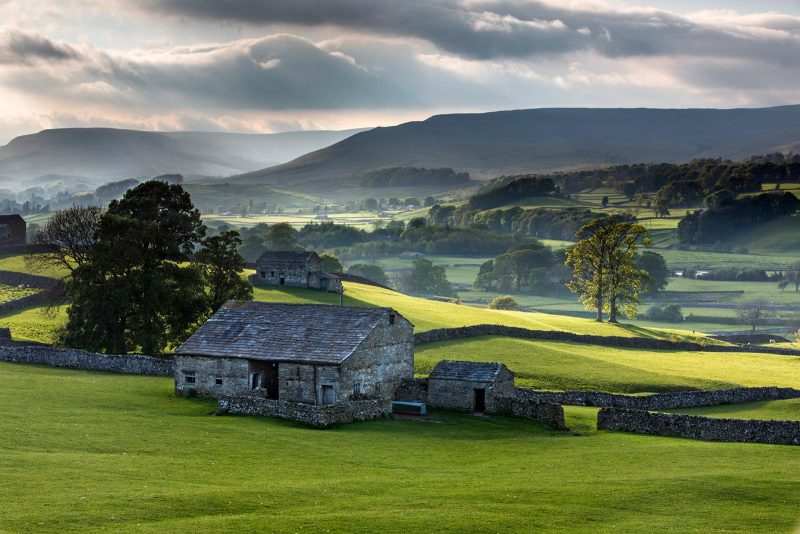
We are probably all aware of the impact of atmospheric perspective without necessarily ever having thought about it. It is most obvious in scenes where we can see a long way. Notice how, in the above photo, the landscape features become less well defined as we progress into the distance.On very clear days distant hills might look closer than normal, an illusion created by the clarity with which we can see them but, when compared to foreground, distant landscape features always look less saturated and have less contrast, giving them a slightly hazy, often blue, appearance.
Even without atmospheric perspective, we would still interpret interlocking hills as a feature of a 3-dimensional scene. We know that where one hill slope is broken by another we have an overlap of features, and one is nearer than the other.But this type of perspective is often used to create illusions, such as having someone nearer the camera, effectively leaning against the top of a tall building or holding a distant object in their hands.

Depth in landscape photography
You already know how to get more depth of field, you stop down the lens aperture. Stopping down a lens to smaller apertures means more of the view will be in focus then if shot with a wider aperture.Having foreground interest goes hand in hand with the previous tip, or you can implement this technique on its own. Foreground interest tends to make a view as though they are part of the image, since the foreground element may be seen as a substitute for the viewer.
A leading line brings the viewer somewhere. Depending on intent, you can lead the viewer from one side of the image to the other or it can lead the viewer deeper into the photograph.
A tool for creating depth in landscape photos that may not be completely obvious is adjusting exposure and also contrast levels from light to dark or vice versa.

The way this works often depends on the percentage of light to dark, how extreme the difference, and where in the photo we place the differences. This is similar to the previous tip about light to dark and vice versa, simply using color differences instead.
Scale in landscape photography

Perhaps the most common way to show the size of a grand landscape is to include a person for scale. Some find this technique overused, but there is a reason it is so popular — people are easy to find. In the same way that it is easy to judge the size of people in a landscape, other animals also are quite good at providing a sense of scale to your photos. Of course, it is difficult to find a beautiful landscape with picturesque wildlife in the same frame — which is why it is easier to use people for scale, if that works for your image.So far, I have discussed the living creatures that can provide scale to a scene — people, wildlife, and plants — but nonliving structures can do the same job. Everything from roads to houses can be incorporated into a landscape photo, and they make it possible to demonstrate the size of the scene as well. Though not as exact as including objects for scale, it also is possible to compose your photos in a way that shows the size of your scene. Sometimes, this isn’t feasible — for example, it can be impossible to show the size of a distant sand dune without including an object for scale — but other landscapes can be put into perspective simply by the way you frame your photo.
Light in landscape photography
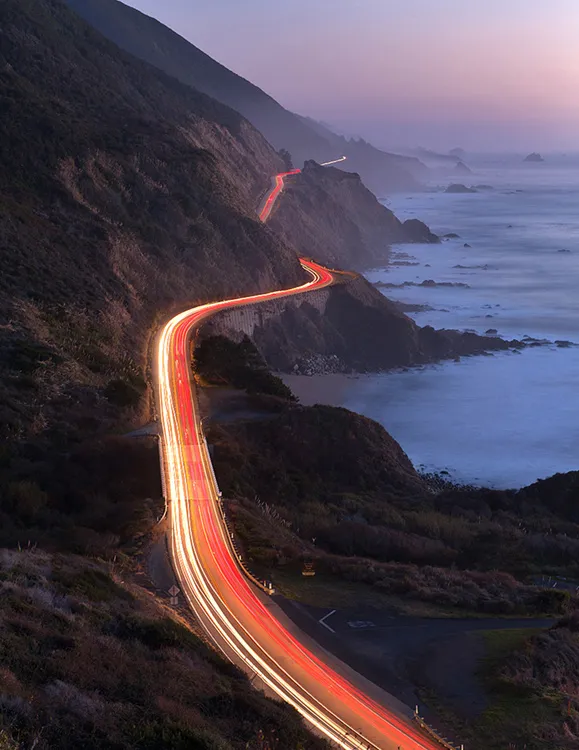
Landscape photographers talk about two essential lighting characteristics: the quality and the direction. Lighting quality refers to the hardness or softness of the light, where soft light produces limited shadows and saturated colors, while hard light adds lots of contrast and heavy shadows.And lighting direction refers to the direction at which the light strikes your subject. For instance, noontime sunlight hits the subject from above, evening sunlight hits the subject from the side, etc. Reflected light, also called bounced or diffused light, occurs when direct sunlight reflects off an adjacent surface. It can make for stunning photos, thanks to its soft, even, beautiful effect.Light on overcast and foggy days is soft, subdued, and bluish. Shadows are negligible, and light directionality essentially disappears.Note that you can have partial backlighting, when the sun comes from roughly behind the subject, and you can have total backlighting, when the sun beams out from directly behind the subject. You can also use human-made light to carefully illuminate subjects with a flashlight (this technique is known as light painting).
Colour in landscape photography
Colors have different psychological associations. Different combinations of color determine how we comprehend a photograph. For example the harmonious combination of blue and green cultivates a relaxed atmosphere. The color wheel contains all the colors in a readable format.All creative applications of color exist within the color wheel. This allows photographers to refer to the tool as a handy guide. Here is a version below.
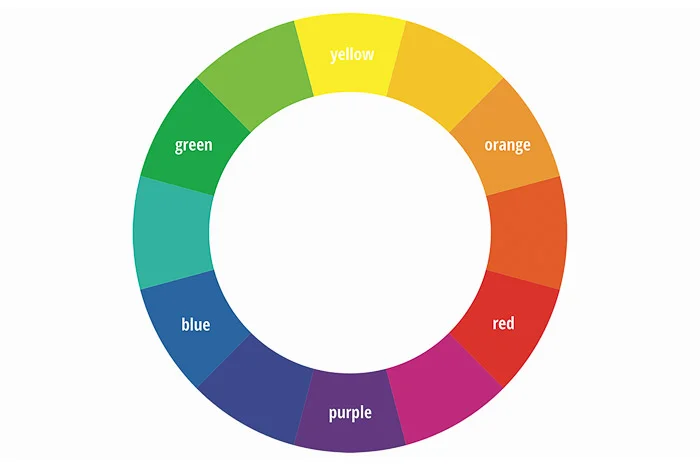
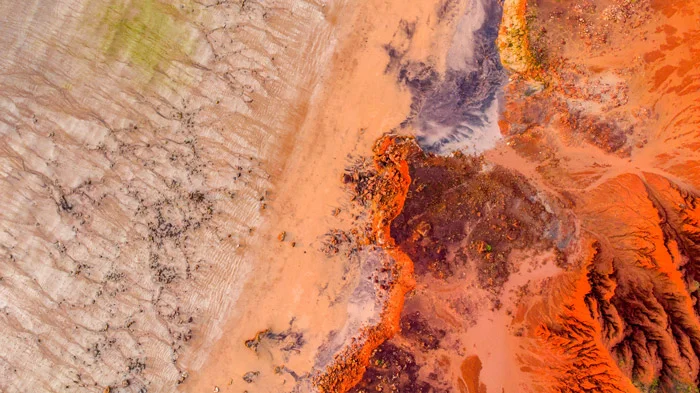
You can use analogous groups like autumnal reds, vermilion, and oranges in landscape photos. Or you can use marine greens, teals, and blues. These create depth and visual resonance.
Shadow in landscape photography
The visualization of a photograph, whether it is a landscape or not, arises from the creative intention of the photographer, which in turn leads to the framing of the composition. From there, the choice of the quality of light (e.g., the directionality and color temperature) provides the photographer his or her most powerful tool to translate that artistic vision into reality.
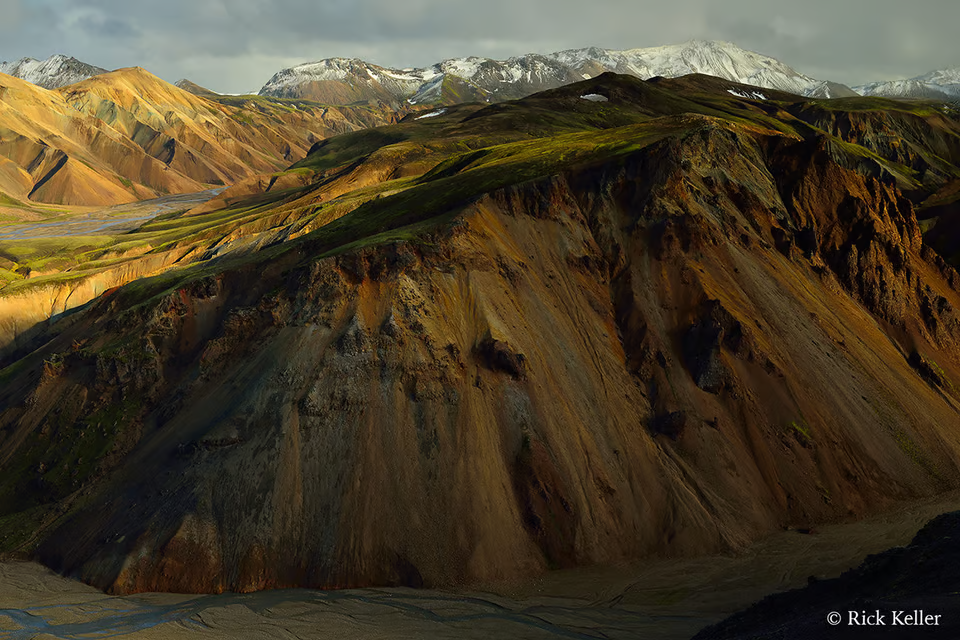
Texture in landscape photography
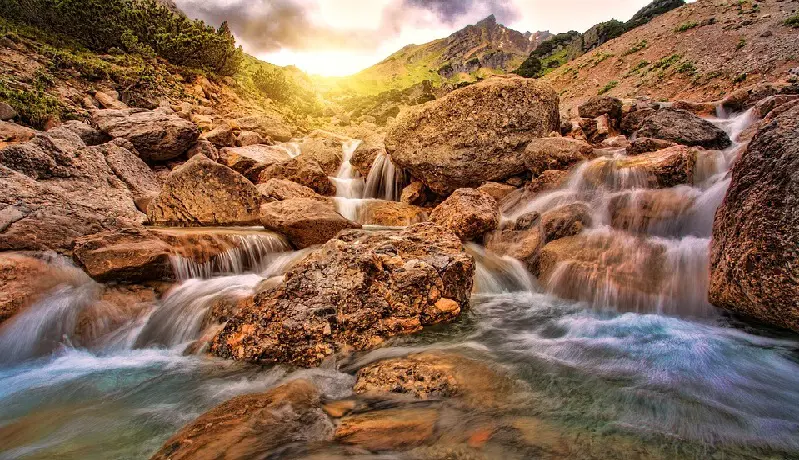
Textures are all around us; especially in the natural world. By paying close attention to the details found in nature, you’ll be able to incorporate textures into your photographs more easily.One way to make a big impact with texture is by looking for contrast. Whether it’s soft, billowing clouds contrasting with rugged trees and mountains, or a smooth, flowing river and rugged rocks, look to combine contrasting textures for maximum visual impact.
Tonal Values in landscape photography
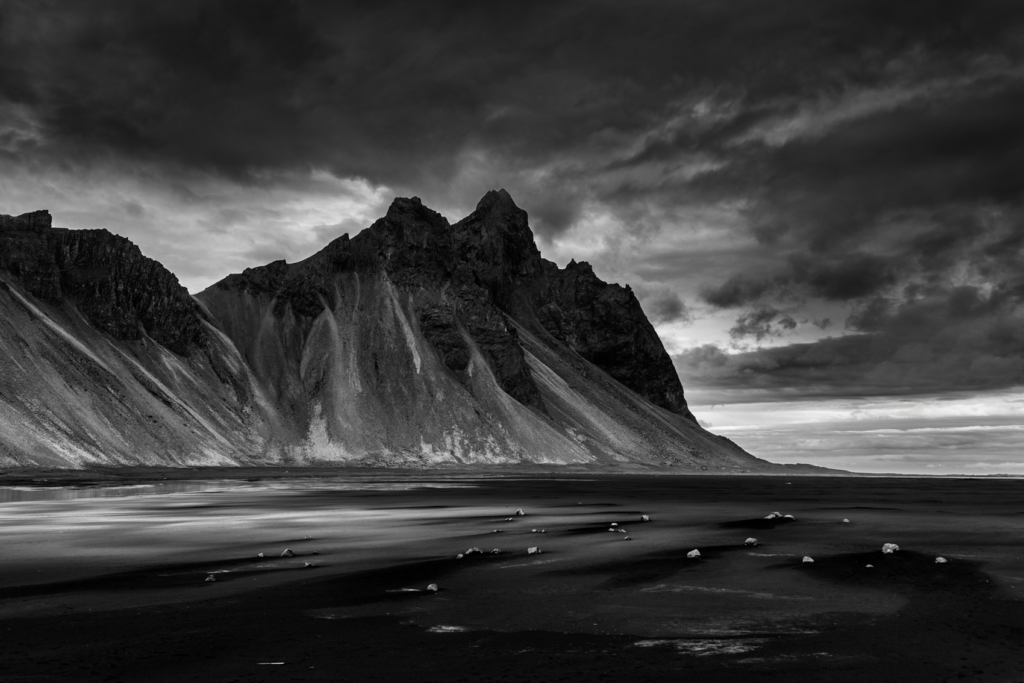
Tonal range in photography is the brightness levels of light captured by your camera. This can range from pure blacks to pure white and shades of grey in-between. An image with a wide range of tones will have pure black to pure white in your image. A small or narrow range of tones will include a smaller range from shadows to highlights, no pure white, or no pure black, or neither black or whites. The brightness levels within your photo also determines the extent of contrast. If you capture an image with a small range of tones, the overall contrast will be flatter vs. a larger range. In post-processing, you can increase the range of tones to add more contrast by stretching the image to the outer edges… by adding pure black and pure white.
How can landscape photography portray meaning?
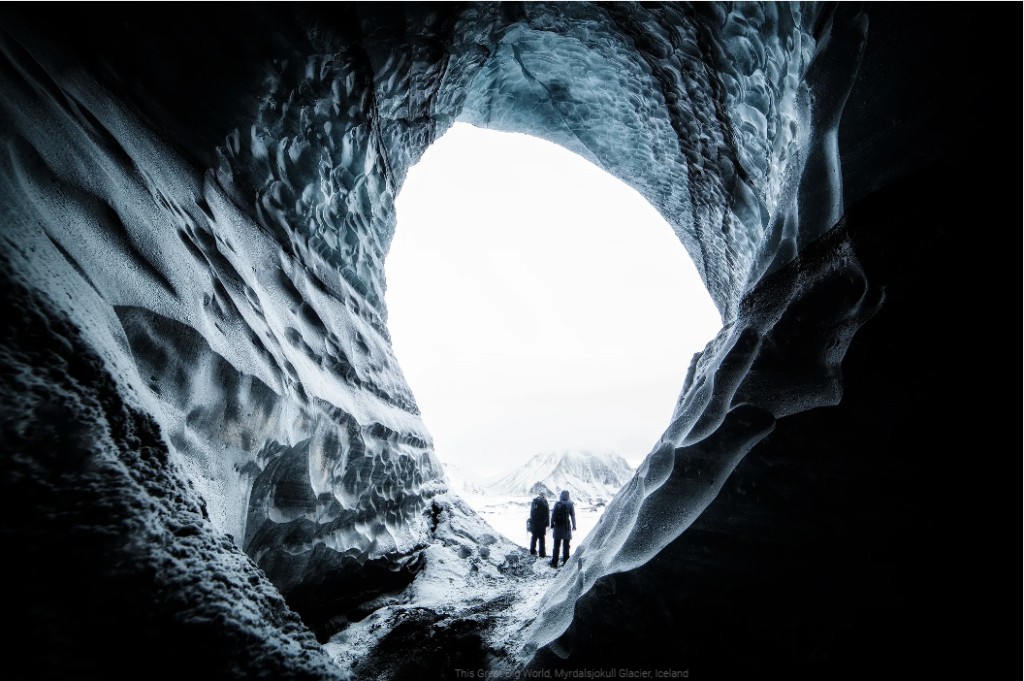
Creating emotion is very important during landscape photography, it can portray an emotion with a dramatic and drastic scene. These photos are the ones that draw people in, making them feel like they are within the story line and immersed in the image. Lighting and weather is a really big one when it comes to portraying emotion within a landscape, weather can heavily instantly affect a persons mood and attitude towards a photo. If a landscape photo is taken in the rain it will instantly change a persons attitude to be more gloomy and sad, whereas the sun generally brings out the best in people.
